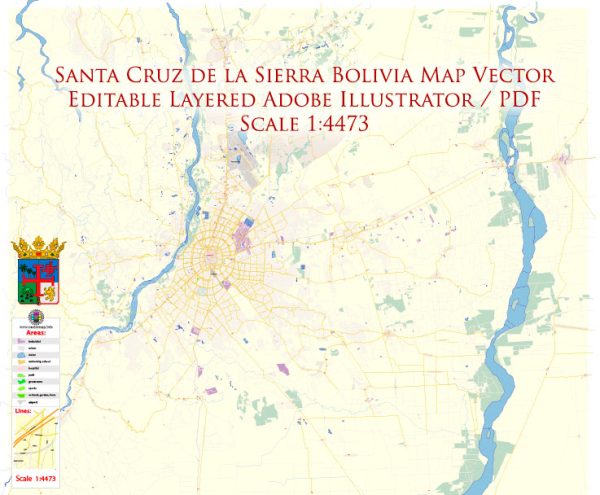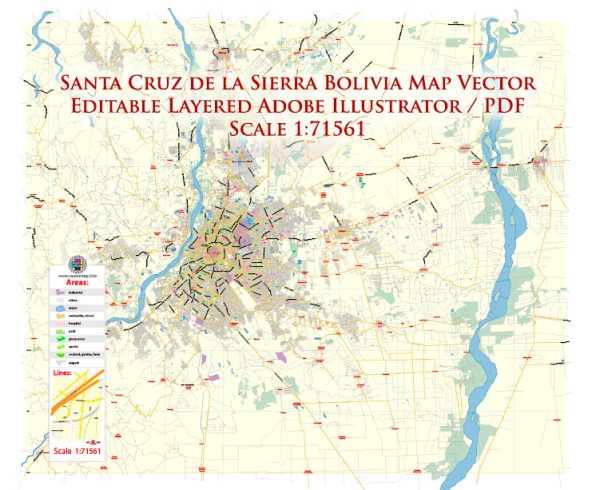Santa Cruz de la Sierra, commonly known as Santa Cruz, is the largest city in Bolivia and serves as the country’s economic and business hub. Its history of urban development is marked by various phases and influences.
- Early History: Santa Cruz was founded in 1561 by Ñuflo de Chaves, a Spanish conquistador, as a Spanish settlement. Initially, the city struggled to attract settlers and experienced a slow growth rate. The region was characterized by its tropical climate and fertile soil, making it suitable for agriculture.
- Colonial Period: During the colonial period, Santa Cruz de la Sierra remained a relatively small and isolated town. The city’s growth was limited by its distance from the highlands and the lack of significant mining activities in the surrounding areas, which were crucial factors for the development of other colonial cities in Bolivia.
- 19th Century: The 19th century brought significant changes to Santa Cruz. The city played a role in the struggle for independence from Spanish rule, and after Bolivia gained independence in 1825, Santa Cruz began to experience a gradual increase in population and economic activity.
- Boom in Agriculture: One of the key factors that contributed to Santa Cruz’s urban development was the expansion of agricultural activities, particularly the cultivation of sugar, cotton, and later, soybeans. The fertile plains surrounding the city became a major agricultural center, attracting migrants from other parts of Bolivia.
- Population Growth: Throughout the 20th century, Santa Cruz experienced significant population growth, driven by rural-to-urban migration and the expansion of agribusiness. The city’s population diversified, and it became a melting pot of different ethnic groups and cultures.
- Economic Center: Santa Cruz emerged as the economic powerhouse of Bolivia, surpassing traditional political and economic centers like La Paz and Sucre. The city’s economy thrived on agriculture, trade, and services, making it a key player in Bolivia’s overall economic landscape.
- Infrastructure Development: As the economic importance of Santa Cruz grew, there was a parallel development in infrastructure. The city saw improvements in transportation, communication, and other essential services. Modern amenities and facilities gradually transformed Santa Cruz into a more cosmopolitan and well-connected urban center.
- Contemporary Development: In recent decades, Santa Cruz has continued to evolve as a dynamic and modern city. The urban landscape has seen the development of skyscrapers, shopping centers, and a range of amenities. The city has also become a hub for international trade and investment.
Santa Cruz de la Sierra’s history of urban development reflects its journey from a small colonial outpost to a thriving economic and cultural center in Bolivia. The interplay of agriculture, migration, and economic activities has shaped the city into what it is today.



 Author: Kirill Shrayber, Ph.D.
Author: Kirill Shrayber, Ph.D.